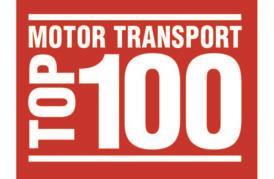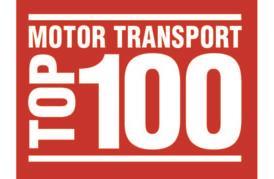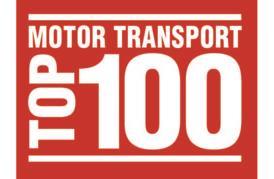They say you have to be an optimist to work in road transport, but the last 12 months of tough trading have taxed even those who always try to see the glass half full.
The latest UK Logistics Confidence Index* compiled for Barclays and corporate finance adviser Grant Thornton showed overall confidence fell 10% in the second half (H2) of 2012, and the industry is gloomy about its prospects for H1 2013.
Looking back on the previous six months, 31% of the sample said business conditions had stayed the same – a big drop on H1 2012 - while 40% said things had got worse (up from 31% in H1 2012) and 27% thought conditions had improved (17% in H1). This indicates that there have been winners and losers as a result of the difficult market according to Philip Bird, a director of Grant Thornton.
“The bigger global players might be feeling a bit more optimistic if they have Asian exposure than purely UK hauliers,” he said.
Rob Riddleston, head of transport and logistics at Barclays, agreed that size matters. “A smaller haulier losing one contract sees a bigger percentage drop in turnover than one of the big boys who are not as susceptible to losing a single contract,” he said. “Customers are trying to drive down cost all the time and it is more challenging lower down the size scale.”
He added: “The transport market remains highly competitive and will only start growing when GDP does. Some sectors are doing better than others and there is also a north-south split, with London and the South East economy performing more strongly relative to the regions.”
Looking ahead to the next six months, the optimism lessens, with 41% expecting business conditions to get worse (up from 26% in H1), while just 16% (down from 25% in H1) thought things could only get better. This drop in optimism could be related to the lack of big events in the first half of 2013, in stark contrast to 2012 which benefited from the Queen’s Jubilee and the London Olympics, and continuing gloom about UK economic prospects.
“There hasn’t been a huge amount of good news around the economy,” said Riddleston. “A lot of companies want to expand but they don’t have the confidence to make the investment. Everyone is waiting for something to happen.”
Bird agrees that without some upturn in the economy there optimism will remain scarce in logistics.
“Is there more bad news than six months ago – probably not,” he said. “The recession has been going on so long now - and the longer it goes on the more gloomy people become. There are no feel-good factors around at the moment.”
There is a danger that the longer the economy goes with no growth the greater the pressure will become on so-called ‘zombie’ firms – operators with large debts, low profitability and an ageing fleet, only kept afloat by lenders hoping an upturn will give them an exit route.
“We would certainly all recognise some companies that are fundamentally good businesses but are very highly geared,” said Riddleston. “The question is how will they get out of that. We tend to see more failures at the start of an upturn as firms which have just managed to survive run out of working capital as they try to expand.”
How much longer zombie firms survive will depend to a large extent on the attitudes of their banks, according to Bird.
“We have a large recovery practice here and we have seen a softening of the position of banks, which are more supportive and seeking a solution rather than selling the business,” he said. “We have been quite impressed at how flexible the logistics sector has been in adapting to the economic conditions, although there has been a lot of competition which has meant sacrificing margin.”
Given that the average profit margin of the MT Top 100 hauliers is less than 1%, the fact that just over half of respondents (53%, the same as H1) expect profits to increase in the next six months could just be a sign that things can’t get any worse for many operators.
Riddleston believes this optimism about profitability could be due to more firms deciding to turn down unprofitable work this year. “Larger logistics companies are letting competitors take contracts they can’t make money on,” he said. “They have been happy to walk away from some contracts rather than being too cut-throat.”
The reality that customers are still using the highly competitive market to drive down rates is borne out by the high number (62%) of respondents who said that commercial terms had become less favourable in the last six months.
Digging a little deeper into how companies will achieve their growth plans however reveals that keeping existing customers (cited as top priority by 30%), winning new contracts (29%) and cost control (18%) still figure highly. Offering new services came out way down the list, mentioned as a top priority by just 4%. This does not bode well for an imminent rise in rates, as operators seem intent on cutting costs rather than innovating in order to keep and win contracts.
“Our view is that costs have generally been cut as far as they can be without putting the business at risk,” said Bird. “Offering more services always comes out pretty low in the rankings and that is the way to become stronger and more profitable in the long term.”
Another option for smaller, weaker firms is to be taken over by a larger rival, and 27% of those surveyed (down from 29% in H1) said they were actively looking at takeover targets.
“We have been saying for a long time that consolidation is important for the sector,” said Bird. “It gives you scale and know-how. We think it will be the bigger players who will drive this consolidation, especially in specialist areas. There is a big MoD outsourcing contract coming up for tender this year and one way for companies to get into this is maybe by acquisition. Valuations have been quite stable for a while now and we don’t think that will change very much.”
*The Index is based on telephone research carried out by Analytiqa. The H2 2012 survey was done in November/December 2012 covering 99 managers and directors working for UK transport and logistics operators. The H1 2012 was carried out in May 2012 and two thirds of respondents took part in both the H1 and H2 surveys.
Business conditions in the next six months
[chartboot version= '2.2' code= 'D35C' border= '1' width= '625' height= '325' attribution= '1' jsondesc= '{"containerId":"visualizationD35C","dataTable":{"cols":^{"id":"","label":"Business conditions in the next six months","pattern":"","type":"string"},{"id":"","label":"","pattern":"","type":"number"}|,"rows":^{"c":^{"v":"","f":null},{"v":null,"f":null}|},{"c":^{"v":"The same","f":null},{"v":42.4,"f":null}|},{"c":^{"v":"Somewhat more difficult","f":null},{"v":34.3,"f":null}|},{"c":^{"v":"Somewhat more favourable","f":null},{"v":15.2,"f":null}|},{"c":^{"v":"Much more difficult","f":null},{"v":7.1,"f":null}|},{"c":^{"v":"Much more favourable","f":null},{"v":1,"f":null}|},{"c":^{"v":"","f":null},{"v":null,"f":null}|}|,"p":null},"options":{"is3D":false,"pieHole":0,"booleanRole":"certainty","colors":^"#000000","#DC3912","#FF9900","#109618","#990099","#0099C6","#DD4477","#66AA00","#B82E2E","#316395","#994499","#22AA99","#AAAA11","#6633CC","#E67300","#8B0707","#651067","#329262","#5574A6","#3B3EAC","#B77322","#16D620","#B91383","#F4359E","#9C5935","#A9C413","#2A778D","#668D1C","#BEA413","#0C5922","#743411"|,"vAxes":^{"viewWindow":{"max":null,"min":null},"minValue":null,"maxValue":null,"useFormatFromData":true},{"viewWindow":{"max":null,"min":null},"minValue":null,"maxValue":null,"useFormatFromData":true}|,"hAxis":{"viewWindow":{"max":null,"min":null},"minValue":null,"maxValue":null,"useFormatFromData":true}},"state":{},"view":{},"chartType":"PieChart"}' ]













